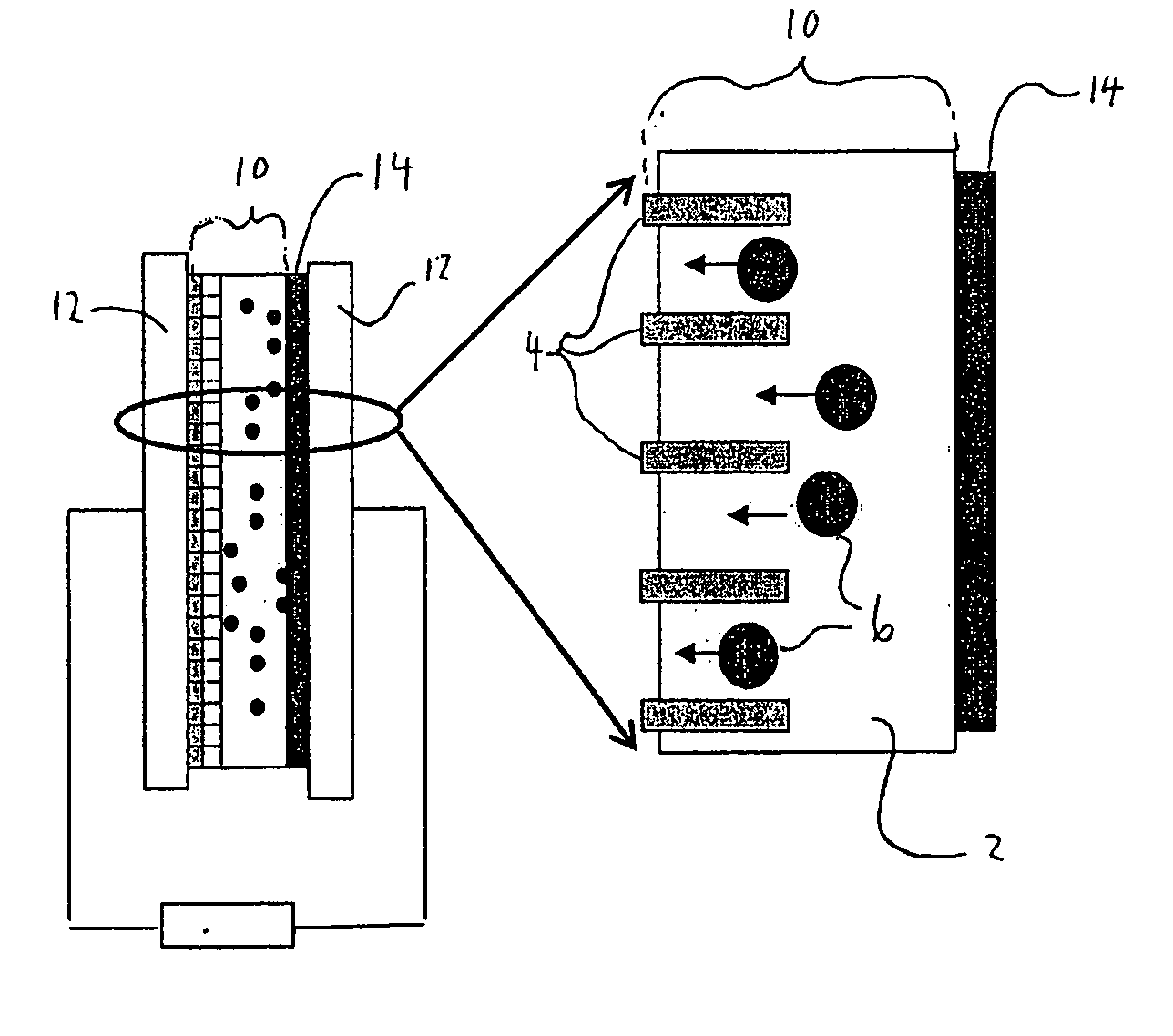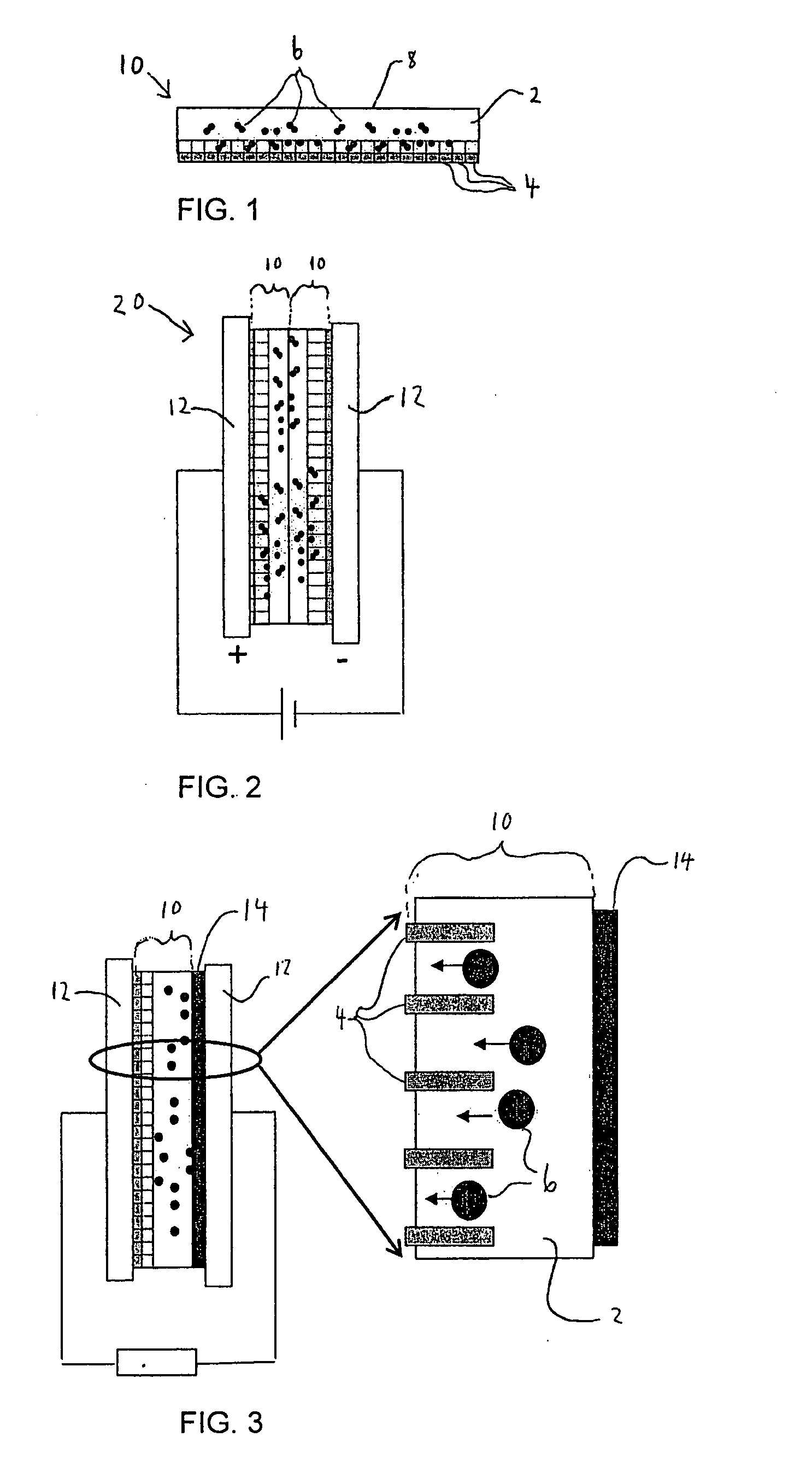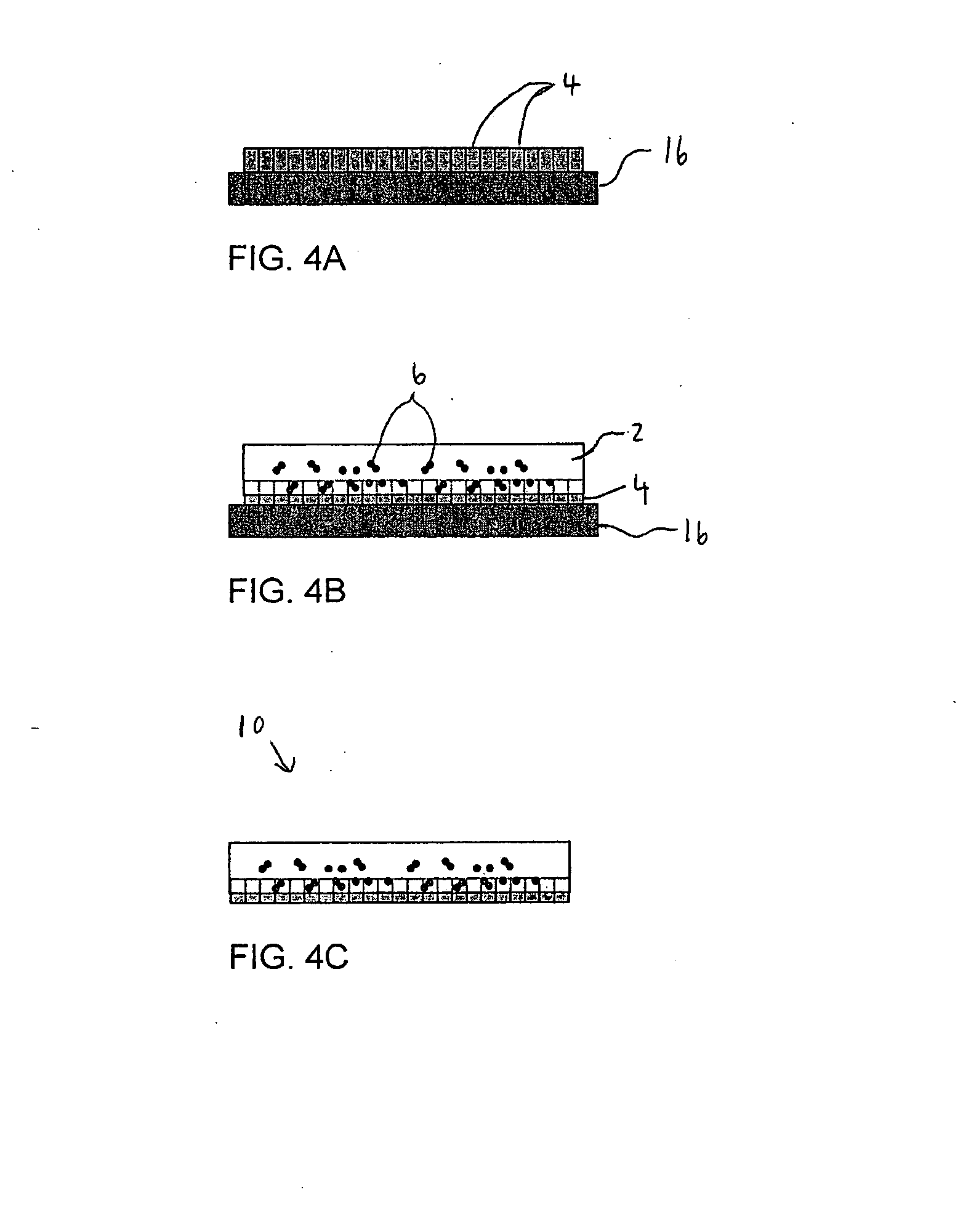Energy storage devices and composite articles associated with the same
a technology of energy storage and composite articles, which is applied in the direction of non-metal conductors, conductors, electrochemical generators, etc., can solve the problems of increasing the equivalent resistance, liquid electrolyte and a separator, and complex processes
- Summary
- Abstract
- Description
- Claims
- Application Information
AI Technical Summary
Problems solved by technology
Method used
Image
Examples
example 1
[0062]The following non-limiting example illustrates laboratory production and characterization of composite structures and energy storage devices based on such structures.
Carbon Nanotube Growth: Vertically aligned carbon nanotube (CNT) films on patterned and unpatterned substrates were prepared by a water-assisted chemical vapor deposition process. Typically, a 10 nm Al layer and 1-3 nm Fe layer were deposited by e-beam on the surface of 1 μm thick SiO2 covered Si wafer. Ethylene was used as carbon source, and Ar / H2 (15% H2 content) as buffer gas. In a typical CVD growth run, 300 sccm Ar / H2 flowed through an alumina tube during the furnace heating up to the CNT growth temperature (750-800° C.). After the furnace reached the set temperature, the Ar / H2 flow was immediately increased to 1300 sccm, and another fraction of Ar / H2 gas was bubbled through a water bottle (which was kept at room temperature) with a flow rate of 80 sccm, and ethylene gas was passed at a rate of 100 sccm into ...
example 2
[0070]The following example illustrates production and characterization of multi-wall nanotubes (MWNT) which may be suitable for use in composite structures.
[0071]50-100 micron MWNT were grown on quartz and silicon substrates through chemical vapor deposition. A gaseous mixture of ferrocene (0.3 g), as a catalyst source, and xylene (30 mL), as a carbon source, was heated to over 150° C. and passed over the substrate for 10 min, which was itself heated to 800° C. in a quartz tube furnace. The MWNT grew selectively on the oxide layer with controlled thickness and length. (The oxide layer of the substrate can be patterned by photolithography followed by a combination of wet and / or dry etching in order to create various patterns of MWNT.)
[0072]A scanning electron microscope (SEM) image of a typical MWNT forest grown on silicon is shown in FIGS. 9A and 9B. These tubes are vertically aligned with a typical diameter of 10-20 nm and length of 65 μm. The samples, with the MWNT side facing up...
example 3
[0073]In this example, capacitors were prepared in accordance with the description above; however, a metal coating was deposited on an exposed (e.g., non-embedded) portion of the elongated conductive structures. With the addition of this metal coating as electrical conductor 12, advantageous capacitance and power density values were obtained by reducing the contact resistance.
A. Supercapacitance Performance
[0074]The charge-discharge curves were measured and a specific capacitance of 36 F / g and 22 F / g were calculated for the CNT-cellulose composite electrodes with KOH and RTIL electrolyte, respectively. A cyclic voltammogram 100 is shown in FIG. 10A, showing current-voltage curves 101 and 102 for supercapacitors with KOH or RTIL electrolyte, respectively. A plot 105 showing charge-discharge curves 106 and 107 of the supercapacitors are shown in FIG. 10B, each supercapacitor having either KOH or RTIL electrolyte, respectively.
B. Li-Battery Performance
[0075]The capacity / voltage plot 11...
PUM
| Property | Measurement | Unit |
|---|---|---|
| Fraction | aaaaa | aaaaa |
| Fraction | aaaaa | aaaaa |
| Temperature | aaaaa | aaaaa |
Abstract
Description
Claims
Application Information
 Login to View More
Login to View More - R&D
- Intellectual Property
- Life Sciences
- Materials
- Tech Scout
- Unparalleled Data Quality
- Higher Quality Content
- 60% Fewer Hallucinations
Browse by: Latest US Patents, China's latest patents, Technical Efficacy Thesaurus, Application Domain, Technology Topic, Popular Technical Reports.
© 2025 PatSnap. All rights reserved.Legal|Privacy policy|Modern Slavery Act Transparency Statement|Sitemap|About US| Contact US: help@patsnap.com



